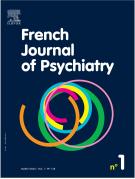Fronto-temporal transcranial direct current stimulation (tDCS) for auditory verbal hallucination in schizophrenia - 29/05/20
 , C. Fonteneau, E. Poulet, M. Mondino, J. Brunelin
, C. Fonteneau, E. Poulet, M. Mondino, J. BrunelinRésumé |
Objective |
Up to 25% of patients with schizophrenia present with auditory verbal hallucinations (AVH) that are refractory to drug treatment. In such cases, evidence suggests that fronto-temporal transcranial direct current stimulation (tDCS) could alleviate AVH but these results were mixed and controversial. Here, we aimed to investigate the clinical effect of tDCS on AVH and its physical effects by measuring injected electric field distribution in the brain of patients. We hypothesized the superiority of active tDCS over sham to decrease AVH and that patients who will respond to tDCS would display greater electric field distribution in the brain areas involved in AVH than non-responders.
Method |
Sixty patients with schizophrenia and daily refractory AVH were randomly allocated to receive either active (2mA, 20min) or sham tDCS applied twice daily (5 days). The anode was placed over the left dorsolateral prefrontal cortex and the cathode over the left temporo-parietal cortex. AVH severity was assessed with the Hallucination Change Scale (HCS). A modelling of the injected electrical field based on the MRI of each patient was compared between responders (HCS≤5) and non-responders.
Results |
Active tDCS can significantly decrease AVH [F(1,54)=4.52; P=0.03] as compared to sham. The effect was significant immediately after the tDCS, remain significant 1 month after the tDCS but did not reach significance 3 months later. At baseline, patients of the active group who will respond to tDCS displayed higher electric field strength in the left superior temporal gyrus (STG) than non-responders.
Conclusion |
Fronto-temporal tDCS may alleviate treatment-resistant AVH. High distribution of the electric field within the left STG was observed in responders.
Le texte complet de cet article est disponible en PDF.Keywords : Schizophrenia, tDCS, Hallucinations, Modelisation
Plan
Vol 1 - N° S2
P. S117-S118 - décembre 2019 Retour au numéroBienvenue sur EM-consulte, la référence des professionnels de santé.
L’accès au texte intégral de cet article nécessite un abonnement.
Déjà abonné à cette revue ?

